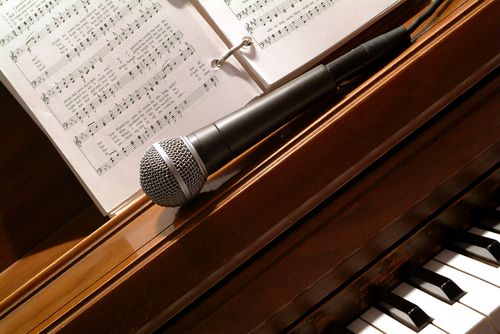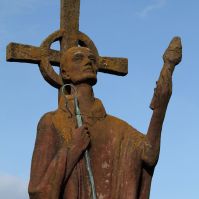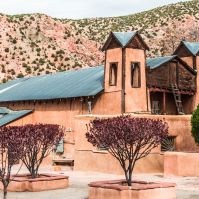 Sacred Harp singing is a treasured tradition in many religious communities. Its name comes from a songbook with the same title, although not all gatherings stick to just the songs in the original book. Participants gather and sing songs in four-part harmony. It's not a performance; it's just an opportunity to experience the joy of group singing.
Sacred Harp singing is a treasured tradition in many religious communities. Its name comes from a songbook with the same title, although not all gatherings stick to just the songs in the original book. Participants gather and sing songs in four-part harmony. It's not a performance; it's just an opportunity to experience the joy of group singing.
This style of community singing started in the late 1800s in New England and has since branched out around the world. Modern gatherings are most often found in the southern United States, and people often travel great distances to go to their favorite spots.
Offers Consistent Structure
One of the most welcoming aspects of Sacred Harp gatherings is that anyone familiar with the structure can easily join in, even if he or she hasn't met with a particular group before. The seating arrangement starts with an open square facing inward with rows lined up behind each side of the square. Each side is a different part:
- Soprano
- Alto
- Tenor
- Bass
Singers arrange themselves according to the range with which they are most comfortable. The tenor part typically carries the melody. Those with more Sacred Harp experience tend to sit in the front to better set the tone for the group and stay in line with the leader who stands in the middle of the open square.
Welcomes Every Voice
There are no tryouts for Sacred Harp groups. Every voice is welcome, regardless of experience or training. Some people choose to sit and listen the first time they attend, but soon they are caught up in the communal joy of raising their voices in song.
There are also no set leaders. Anyone is welcome to lead a song of his or her choice. It is common for many different leaders to come to the front during a singing session, and participants are often enthusiastic for new leaders to emerge. For people who are intimidated by the thought of joining a choir, Sacred Harp offers a judgment-free alternative for those who love group singing.
Teaches Sight Reading
Another benefit that participants gain from Sacred Harp singing is an improvement in their sight-reading skills. The music is written with shape notes, a notation that designates a specific shape to each tone. Instead of trying to find a particular pitch, singers learn to read the music based on each note's position relative to the ones surrounding it. This is the reason shape note is often referred to as fa-sol-la singing, putting the importance of communal harmony on the tones rather than the specific notes.
Builds Community
While their love of singing is what tends to draw people to their first Sacred Harp gathering, the community they find there is often what keeps them coming back. These nondenominational events are often hosted at churches where there is a lot of congregational interest, but they are open to anyone. A typical gathering involves not only singing but also a time for fellowship and a shared meal afterward.
In a world where people who have different interpretations of scripture or different rituals are often at odds with each other, Sacred Harp singing operates as a unifying force. There is no sermon or agenda. It is simply an event where people of all ages, faiths, and levels of experience come together to make a joyful noise.
Many people of faith prefer a specific type of worship service to attend weekly, but a gathering of enthusiastic singers making beautiful harmonies together may meet a need that their typical religious services miss. Sacred Harp singing provides participants an opportunity to connect with others who share their love of music.



